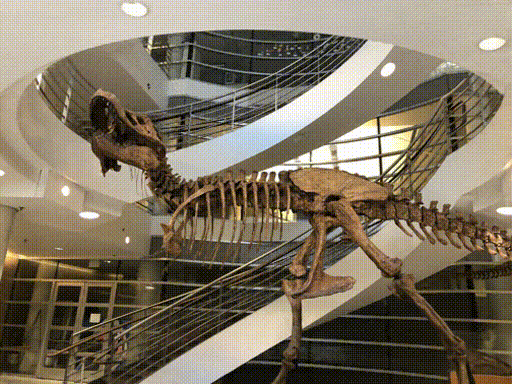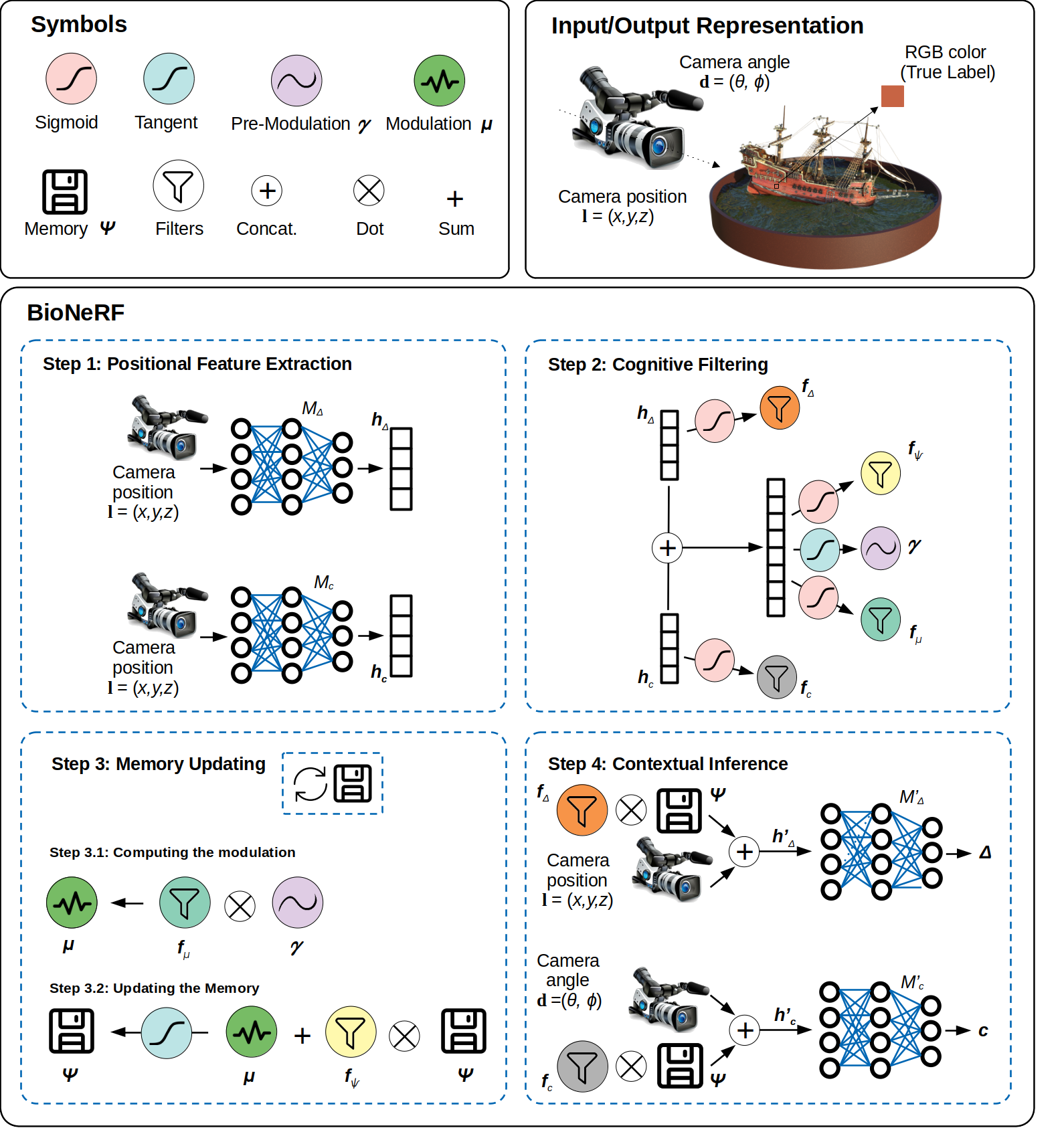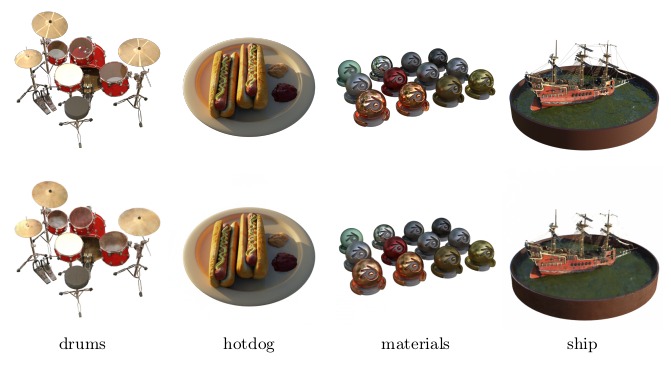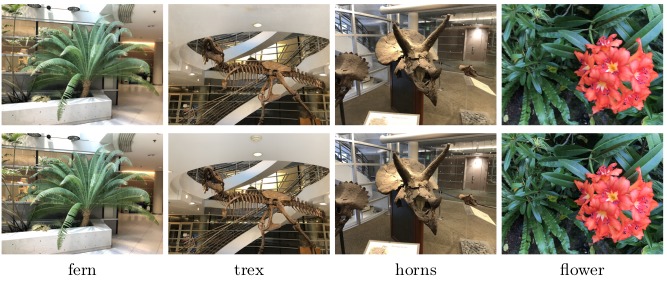This repository provides code to integrate the BioNeRF into nerfstudio.
BioNeRF follows the integration guidelines described here for custom methods within Nerfstudio.
Follow these instructions up to and including "tinycudann" to install dependencies and create an environment
git clone https://github.com/Leandropassosjr/nf_bionerf
Navigate to this folder and run python -m pip install -e .
Run ns-train -h: you should see a list of "subcommands" with bionerf included among them.
Now that BioNeRF is installed you can play with it!
- Launch training with
ns-train bionerf --data <data_folder>. This specifies a data folder to use. For more details, see Nerfstudio documentation. - Connect to the wand by forwarding the wand port (we use VSCode to do this), and click the link provided in the output of the train script.
- Within the wand, you can check the training progress and several metrics.
BioNeRF (Biologically Plausible Neural Radiance Fields) extends NeRF by implementing a cognitive-inspired mechanism that fuses inputs from multiple sources into a memory-like structure, thus improving the storing capacity and extracting more intrinsic and correlated information. BioNeRF also mimics a behavior observed in pyramidal cells concerning contextual information, in which the memory is provided as the context and combined with the inputs of two subsequent blocks of dense layers, one responsible for producing the volumetric densities and the other the colors used to render the novel view.
Here is an overview pipeline for BioNeRF, we will walk through each component in this guide.
The first step consists of feeding two neural models simultaneously, namely
This step performs a series of operations, called filters, that work on the embeddings coming from the previous step. There are four filters this step derives: density, color, memory, and modulation.
Updating the memory requires the implementation of a mechanism capable of obliterating trivial information, which is performed using the memory filter (Step 3.1 in the figure). Fist, one needs to compute a signal modulation
This step is responsible for adding contextual information to BioNeRF. Two new embeddings are generated, i.e.,
Blender (synthetic)
| drums | materials | ficus | ship | mic | chair | lego | hotdog | AVG | |
|---|---|---|---|---|---|---|---|---|---|
| PSNR | 25.66 | 29.74 | 29.56 | 29.57 | 33.38 | 34.63 | 31.82 | 37.23 | 31.45 |
| SSIM | 0.927 | 0.957 | 0.965 | 0.874 | 0.978 | 0.977 | 0.963 | 0.980 | 0.953 |
| LPIPS | 0.047 | 0.018 | 0.017 | 0.068 | 0.018 | 0.011 | 0.016 | 0.010 | 0.026 |
Ground-truth (top) and synthetic view (bottom) images generated by BioNeRF regarding four Realistic Blender dataset’s scenes.
LLFF (real)
| Fern | Flower | Fortress | Horns | Leaves | Orchids | Room | T-Rex | AVG | |
|---|---|---|---|---|---|---|---|---|---|
| PSNR | 25.17 | 27.89 | 32.34 | 27.99 | 22.23 | 20.80 | 30.75 | 27.56 | 27.01 |
| SSIM | 0.837 | 0.873 | 0.914 | 0.882 | 0.796 | 0.714 | 0.911 | 0.911 | 0.861 |
| LPIPS | 0.093 | 0.055 | 0.025 | 0.070 | 0.103 | 0.122 | 0.029 | 0.044 | 0.068 |
Ground-truth (top) and synthetic view (bottom) images generated by BioNeRF regarding four LLFF dataset’s scenes.
@article{passos2024bionerf,
title={BioNeRF: Biologically Plausible Neural Radiance Fields for View Synthesis},
author={Passos, Leandro A and Rodrigues, Douglas and Jodas, Danilo and Costa, Kelton AP and Adeel, Ahsan and Papa, Jo{\~a}o Paulo},
journal={arXiv preprint arXiv:2402.07310},
year={2024}
}



